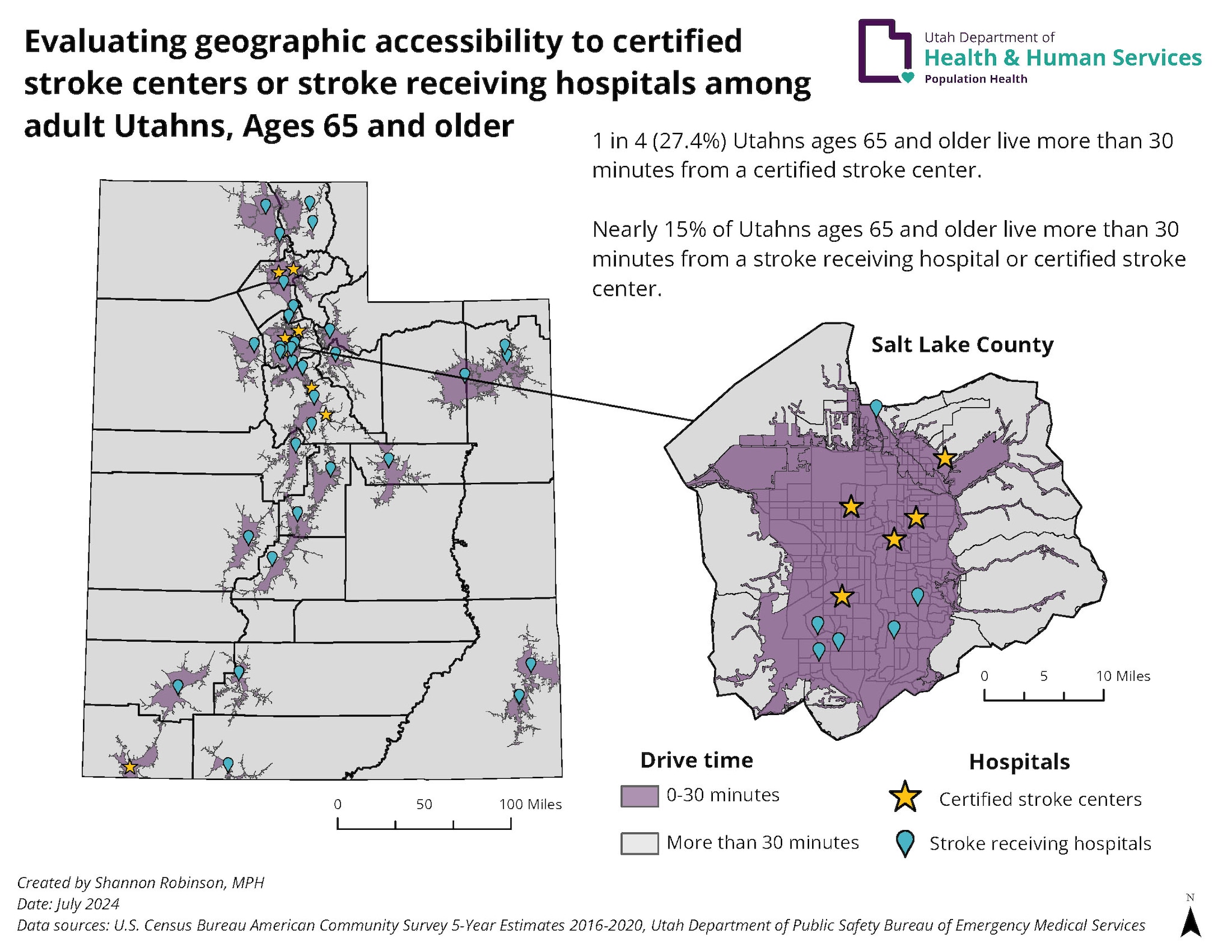At a glance
Map

Data sources
This map displays 30-minute drive times to certified stroke centers or stroke receiving hospitals among adults ages 65 and older in Utah. Certified stroke centers are displayed using yellow stars, and stroke receiving hospitals are displayed using blue pinpoints. Drive times between zero and 30 minutes are displayed using a purple shade, and a drive time of more than 30 minutes is grayed out. A majority of certified stroke centers and stroke receiving hospitals are located in the Wasatch Front (central northern area of Utah).
ArcGIS Pro Version 3.3
U.S. Census; Utah Department of Public Safety Bureau of Emergency Medical Services.
Population weighted centroids were calculated at the census block level to weigh for those ages 65 and older using American Community Survey 5-Year Estimates, 2016-2020. A 30-minute drive time analysis was conducted going toward the nearest facility from the centroids, and hospitals were displayed using point-level data from the Utah Department of Public Safety Bureau of Emergency Medical Services. Primary and comprehensive stroke centers were combined within the dataset to create the "certified stroke center" classification.
This map will be used to improve stroke work in Utah. Stroke education and prevention programs will be targeted toward those ages 65 and older living in areas outside of the 30-minute window. Additionally, work will be done to assess and improve the quality of care within stroke receiving hospitals.
Shannon Robinson, Diabetes and Heart Disease Epidemiologist/Evaluator
Utah Department of Health and Human Services
385-249-4836
smrobinson@utah.gov
Shannon Robinson, Diabetes and Heart Disease Epidemiologist/Evaluator, Utah Department of Health and Human Services. Accessed from the Centers for Disease Control and Prevention's Chronic Disease Map Gallery.
